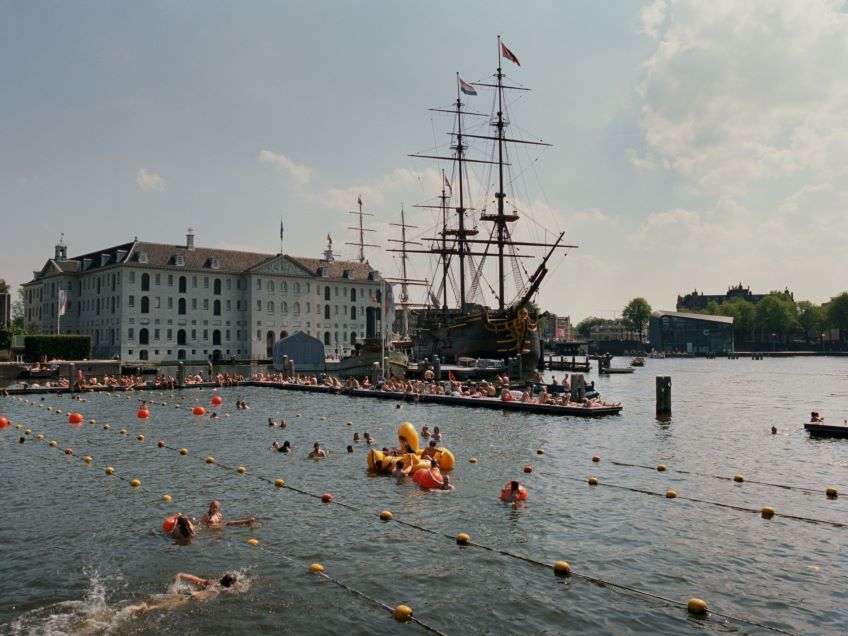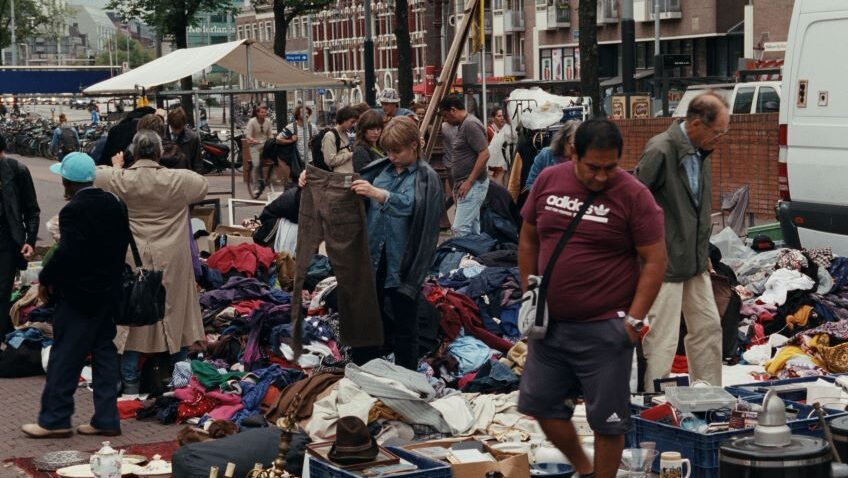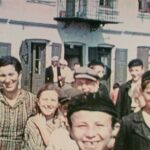Joyce Glasser reviews Occupied City (February 9, 2024) Cert 12A, 266 mins.
December 2022 marked the release of Three Minutes: A Lengthening, produced by Steve McQueen (who directed 12 Years a Slave) and directed by his wife, Bianca Stigter. Stigter’s poignant investigative documentary describes the chance discovery of three-minutes of damaged home movie footage from Nasielsk, Poland, filmed in 1938, showing the faces of some of the towns 3,000 Jewish inhabitants, only 100 of whom survived the Holocaust. To pay tribute to the anonymous faces, Stigter’s research enabled her to elaborate on the footage in a powerful, 69-minute film.
This week we have a much more significant lengthening as Mr McQueen directs the four-hour plus Occupied City, based on Stigter’s book Atlas of an Occupied City: Amsterdam 1040-1945. The new collaboration focuses on another dark, but far better known, chapter of the Holocaust, the Nazi occupation of Holland, and more particularly, Amsterdam, from 1940-1945.
For many, the problem with this praiseworthy and earnest endeavour will not be the length. Patient and receptive audiences will withstand the length (there’s an interval) for the fascinating subject matter and the promise of enthralling stories and enlightening information. But Mr McQueen does not make it easy for us.
Most people know about the occupation of Amsterdam from the Anne Frank diaries and house, as difficult to get a ticket to as was last year’s Vermeer exhibition near-by. There were hundreds of stories like Anne’s and McQueen is to be commended for revealing them to us respectfully, without drama or interjection. Behind address after address, there was once a person, or family, some well-known as artists, politicians, doctors and writers; others just ordinary people suffering an abject fate.

Fewer people will know about the February (1941) general strike in the Netherlands organised by the Communist Party to protest the first mass arrests in Amsterdam’s Jewish neighbourhood. As the Communist Party was outlawed, those taking part in the strike were risking their lives, and three days after the strike began, the reprisals were merciless and extensive. The February strike is the first public protest of the Nazi deportations and pogroms in occupied Europe and the only mass protest organised by non-Jews. A statue of a dock worker on Jonas Daniel Meijerplein in Amsterdam, commemorates the noble sacrifices.
Length aside, the first problem is the lack of any organisation of the unwieldy history. This results in repetitive mini-chapters that begin with an address (which the camera shows us too briefly) and the name of the person or family who once lived there.
Unfortunately for those who might be interested in following up on a particular family or address, English-language narrator Melanie Hyams delivers them in Dutch with a lovely Dutch accent, and there are no captions so we can at least see how the names are spelt. Dutch audiences at least can listen to actress Carice van Houten (Black Book) and take themselves on a walking tour after.
Another problem is that the film is not organised chronologically, which would allow us to follow the progression of the Nazi repression, the pattern of Jewish reactions, the increasingly harsh laws, and, when it comes, the context of The Dutch famine of 1944–1945. Referred to as The Hunger Winter, it was so cold that the starving inhabitants of Amsterdam snuck out at night to dismantle the wooden houses of deported Jewish inhabitants for fire wood.
Instead the narration jumps around from year to year so that the stories we want to be told are hard to follow and we don’t get the whole picture. This was clearly a conscious decision to avoid resembling a University history class, but following and absorbing the events associated with all these random dates is hard work.
Perhaps the oddest, and increasingly offensive decision is the substitution, in place of archival footage, historic stills, photo albums, newspaper clippings or other illustrative shots, scenes from the Covid epidemic in Amsterdam, which is no doubt when some of the film was shot.
Telling us about the February 1941 strike protesters or the various city locations for the round up of Jews and then showing mounted Dutch police rounding up and dispersing a crowd of lock-down protesters (if that’s what they were) is not in the best of taste. A scene showing us sombre queues lining up for injections (shades of Josef Mengele or the gas chambers) is, as gratuitous as is a quick shot of a Palestinian protester.




